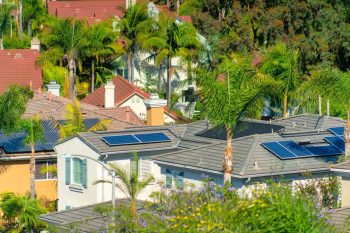When most people think of New York City, they think of crowds and a sprawling urban landscape.
Among the buildings and sidewalks, the Broadway Malls — small parks all measuring around 240 feet by 20 feet — add up to about 10 acres of green space, according to Mongabay.
The history of the malls dates back to the 1850s, but for much of that time, the green space was filled with non-native plants chosen for aesthetic appeal rather than for a thriving local ecosystem.
"The idea was to imitate the boulevards of Europe, namely France, create that grandiosity of a very wide avenue with a pedestrian path in the middle," Ian Olsen, director of horticulture with the nonprofit Broadway Mall Association (BMA), told Mongabay.
Non-native plants can be problematic for a variety of reasons. For one, invasive non-native plants can take over an area, stealing resources from other plants that have evolved to live in the environment and have developed relationships with other creatures in the ecosystem.
These relationships range from offering food to serving as habitats to playing a role in pollination. Throwing this balance out of order can have profound impacts on biodiversity and food chains.
Save $10,000 on solar panels without even sharing your phone number Want to go solar but not sure who to trust? EnergySage has your back with free and transparent quotes from fully vetted providers that can help you save as much as $10k on installation. To get started, just answer a few questions about your home — no phone number required. Within a day or two, EnergySage will email you the best local options for your needs, and their expert advisers can help you compare quotes and pick a winner. |
Now, those in charge of the malls are opting for native plants.
The goal is to make these malls into ecosystems that support native wildlife. According to the Broadway Mall Association, the project began in the spring of 2024, and it will be planting more than "3,000 new native trees, shrubs, grasses, and perennials in each mall."
The project is working well so far. Jay Holmes with the American Museum of Natural History told Mongabay that "the plants attracted the plant dependent insects, and the predators were coming in!"
The presence of predators means that the food chain is being established within that ecosystem. Native plants help stabilize and set that food chain.
TCD Picks » Upway Spotlight
💡Upway makes it easy to find discounts of up to 60% on premium e-bike brands
|
If you were to switch from a grass lawn to a more natural option, which of these factors would be your primary motivation?
Click your choice to see results and speak your mind. |
Beyond getting native plants into public spaces, ensuring that you have a yard with native plants also comes with a variety of benefits. For one, lawns with native plants generally save on time and maintenance costs, as these plants have spent hundreds of years adapting to the environment.
Native plants also integrate more seamlessly with the rest of the ecosystem. Having evolved alongside these plants, pollinators will have a better time than with non-native species, which brings benefits for the human food supply.
Those interested in the rewilding project can find updates via the Broadway Mall Association's website.
Join our free newsletter for good news and useful tips, and don't miss this cool list of easy ways to help yourself while helping the planet.















